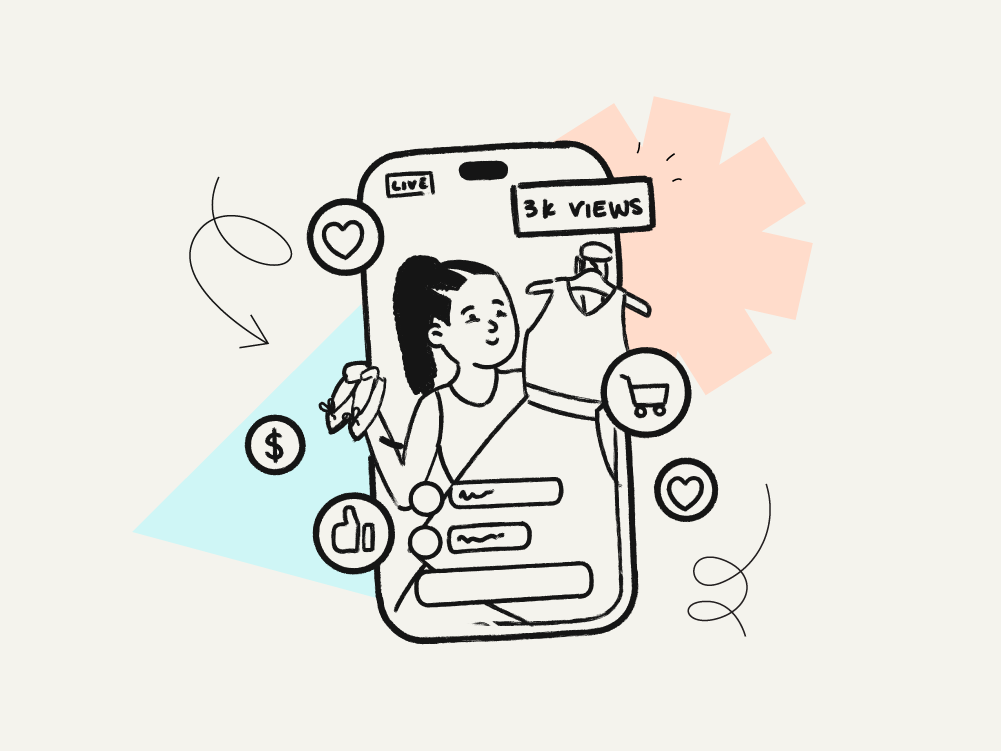So, you’ve had a million-dollar, billion-dollar e-commerce idea to dropship rocks that look like Harry Potter characters—but there’s just one tiny problem: you have no clue who your target audience is.
Are you selling to hardcore "Potterheads" with disposable income? Parents looking for magical stocking stuffers? English/Literature teachers with a sense of humour?
Without a clear picture of your ideal customer, even the most brilliant idea (yes, even wizard-shaped rocks) can get lost in the digital market void.
Fear not! In this article, we’ll lay out 6 simple and effective ways to create your ideal customer profile (ICP), so you can improve your marketing and drive more conversions, including:
- Understanding why you need an ICP
- What variables to focus on
- How to add demographics to bring your ICP to life
- How to analyse and handle data related to your ICP
But first, let's talk some more about what an ideal customer profile is, and why you need it to grow your Shopify store.
Why is it important to create an ICP for your Shopify Store?
It’s no longer good enough to just attract ‘customers’, you want to make sure you’re attracting the customer. The customer sticks by you and your business through thick and thin, buying from you time and again while recommending you to their friends, family and everyone at the Harry Potter conference they’re at (the butterbeer is amazing, by the way).
In reality, you’ll attract a lot of customers who are nearly perfect or just ‘good’, who buy from you, but don’t evangelise you. They’ll give you a go, like what they get, and then move onto the next business. Great in the short term, bad in the long term.
The purpose of an Ideal Customer Profile is to give you something to aim at to boost sales, increase your customer retention rates, and drive more repeat revenue opposed to one-off impulse purchases.
An Ideal Customer Profile is the customer of your dreams. Sometimes it’s made by analysing data of your actual dream customers, and sometimes it’s modelled on what you know you want and need your dream customer to look like. An Ideal Customer profile identifies the customers likes, pain points, dislikes, purchasing habits, personality traits and much more, giving you the the exact type of person to target for long-term success.

What are the questions my customer profile should answer?
Your consumer profiling will likely need to answer some basic questions to help you understand who you’re targeting.
These are some of the questions to bear in mind that might need to be answered by your data:
- What are the key characteristics of my target audience?
- What motivates my audience?
- Where does my target audience live?
- What type of messaging does my ideal customer engage with?
- How does my target audience interact with a business like mine?
- What products and services does my target audience buy?
- Where does my target audience currently buy from?
- What kind of purchasing journey matters to my audience?
- What types of advertising does my audience consume?
- What type of content does my ideal customer want?
- If my target audience wasn’t to buy my product or my competitors, what would they do?

How to create an Ideal Customer Profile for my Shopify store:
1- Understand why you need an Ideal Customer Profile
Make sure you have a clear outcome in mind when pulling together your Ideal Customer Profile for your Shopify store. Consumer data and profiling have so many uses, it’s essential you have a clear goal in mind for your customer profiling. Having a clear goal in mind will really help you focus the direction and scope your profiling and research.
2- Focus on two distinct variables
These should be two variables you expect to polarise your sector. They could be based around price, brand recognition or something else.
For example, you’re dropshipping rocks that look like Harry Potter characters, so you focus on “Which House do my audience identify as?” and “Do my audience only buy characters from the House they identify as?”.
That way you can see if a Hufflepuff is more likely to buy figures of Cedric Diggory and Justin Finch-Fletchley than Draco Malfoy and Horace Slughorn. You might think they only want Cedric, but they may be equally interested in Horace. You never know.
3- Make sure your variables are specific and understandable
Using the example above, you don’t want your respondents telling you they identify as Gryffindor due to an online quiz, but really would have been in Ravenclaw if they were to choose. The best way to make sure your variables are mutually exclusive is to make sure you avoid multiple choice questions if you’re doing consumer research.
It’s important to make sure your variables are mutually exclusive to ensure you’re being accurate, and to get a clear sense of the differences between your customers and their profiles.
4- Add demographics to bring your Ideal Customer Profile to life
Some typical demographic details may include:
Location: if you have a brick & mortar location or provide in-person consulting, you’re likely to be confined geographically, therefore making location a key detail.
Age or gender: your product may be targeted towards teenagers or seniors or specifically for mothers of newborns.
Job title or company info: many B2B products are sold to people in specific jobs, in specific industries or in companies of a certain size.
Household income: luxury services are just not accessible to everyone, focusing on people who have disposable income will be key.
If you want to use targeted media buying—anything from traditional radio spots, to trade journals to Facebook ads—knowing your customer demographics will help you buy ad space that will get your message in front of your ideal client.
Without it, you may be wasting money by showing your product/service to someone who can’t even access it.
5- Analyse your data
There are some great tools like HotJar, Attest and Salesforce that can help a business analyse their data with out of the box solutions, but in reality, all you need is a basic understanding of excel and data so you can see the trends for yourself.
Using tools like conditional formatting and graphs can really help you visualise large sums of data for easier understanding.
6- Rinse and repeat
The beauty of customer profiling for your Shopify website is that it’s an easily repeatable process. In fact, repeating your consumer profiling research is always a good thing, as it means you’ll always be on top of any emerging trends and changes in attitudes among your customers or potential customers.
Plus, it should continually confirm that the Shopify marketing strategies you’re using are correct. If you repeat your customer profile and find it’s completely different to the original or doesn’t match your current marketing efforts, something’s gone wrong.
Once you’ve created your working customer profiles, repeat—budget and time allowing—every year or so. With new competitors, new influencers and brand-new customers all entering the market, the perceptions and status quos will shift with time.

If you're looking for more ways to grow your Shopify store, StoreLab can help.
Both of our mobile app plans include a fully designed, personalised, and customisable iOS & Android mobile app for your store, helping you boost sales, increase AOV, and drive customer loyalty.
To find out which plan is right for you, book a call with one of our Shopify growth experts.

Skyrocket your Shopify sales with a no-code Apple & Android mobile app. Available now on the Shopify app store.















.webp)
